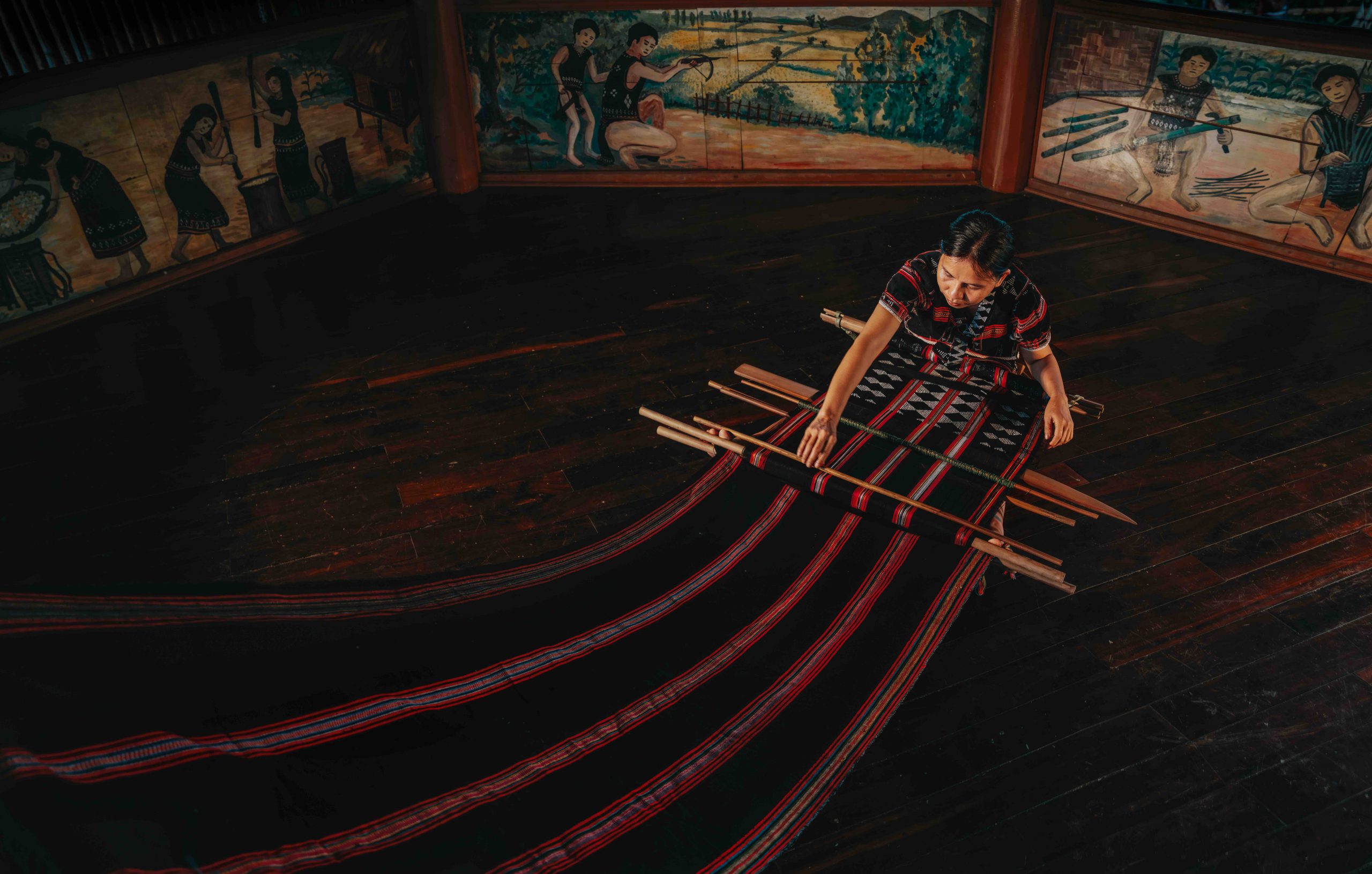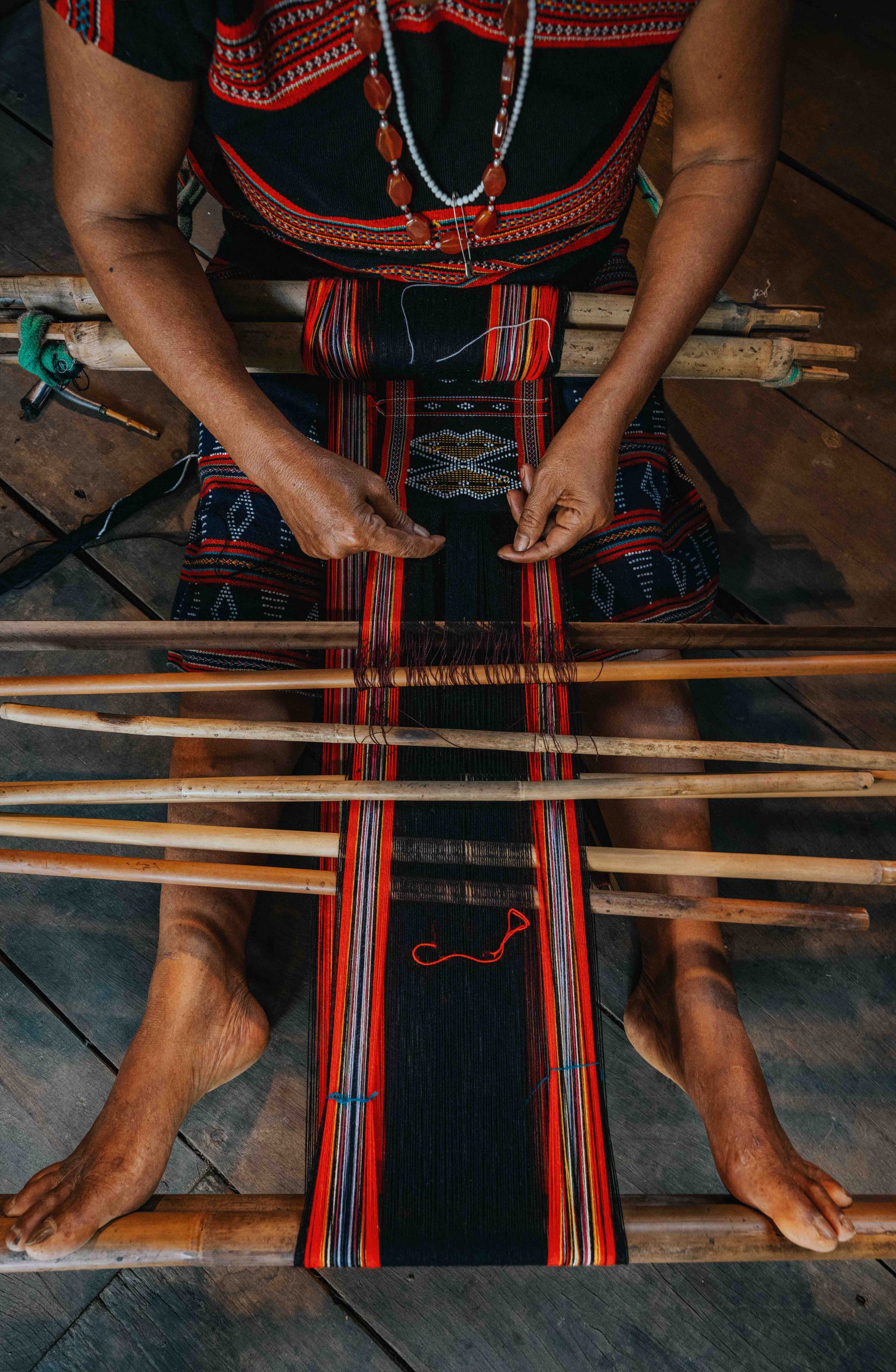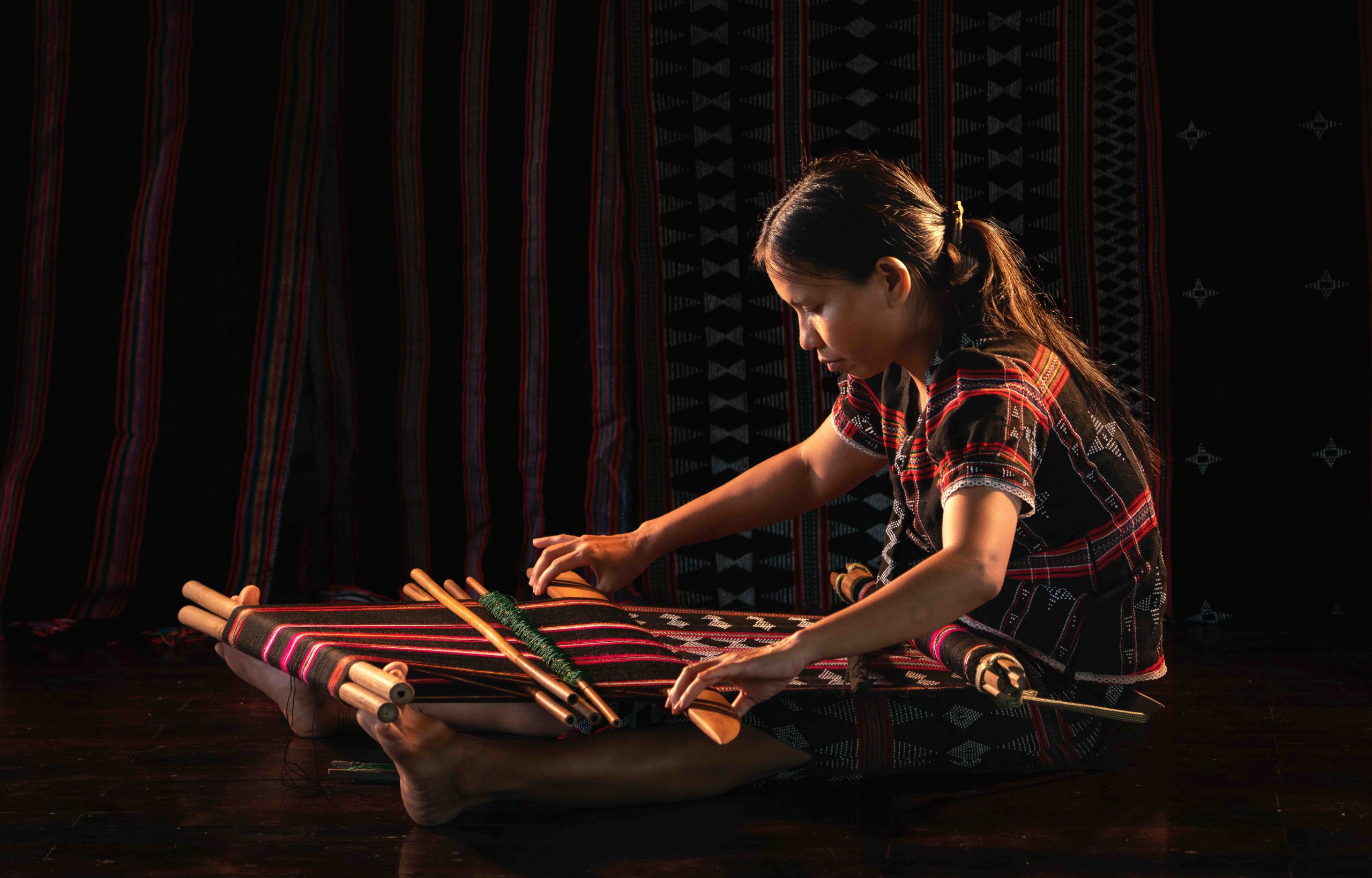Story: Nguyen Phuoc Bao Dan
Photos: Le Tan Thanh
Amid the deep hues of the Truong Son Mountains—the white of mid-mountain clouds, the red of silk cotton flowers and banana blossoms, the green of grass and trees, the yellow of withered leaves, and the purple of twilight—a natural painting emerges. These colors reflect the Ta Oi people’s worldview, which they have long sought to capture and express. They recreate this vibrant tapestry on their Deng fabric, the woven cloth that forms the traditional attire of their ethnic group.

The traditional fabric of the Ta Oi people
During festival days, Ta Oi villages burst with vibrant colors. The men wear loincloths, woven bamboo crowns, curved boar tusks in their hair, and necklaces made of metal. To celebrate with their community, the women don beautiful outfits made from Deng fabric: shirts, skirts, and sashes in rich colors, with beaded necklaces, headscarves, and baskets full of offerings on their backs.
Residing in the mountains in western Thua Thien Hue province, the Ta Oi are indigenous to A Luoi district. Renowned for their weaving skills, they produce woven goods that have become valuable trade items with neighboring ethnic groups.
“To eat salt, go to the plains;
To get Deng fabric, go up to the Ta Oi”.
Before they mastered the weaving of Deng fabric, the Ta Oi people wore loincloths and garments made from bark. The men would venture into the forest to strip bark from trees, soaking it in streams before pounding it into a fibrous material. This resulted in a soft ivory-colored fiber that was used to make clothing. However, as weaving skills developed, women took on the task of creating Deng fabric. A woman’s skill at weaving Deng fabric is regarded as a measure of her value in marriage according to the community’s beliefs.

According to a Ta Oi legend, Kanponu, the sky goddess, taught their people how to weave. Since learning this skill, they have continued to improve their artistry. In contrast, neighboring ethnic groups such as the Pa Coh, Pa Hi, and Bru – Van Kieu have not learned this craft and often buy or barter with the Ta Oi to obtain Deng fabric. Consequently, Deng fabric has become a cultural hallmark that identifies this ethnic group, whose homeland was a crucial link on the Silk Routes in Central Vietnam’s western region in times past.
Deng fabric is created on ancient looms made from simple materials like wood and bamboo. While industrial fibers and plastic beads are used today, historically, the Ta Oi grew cotton and spun the threads themselves.
In the past, they lived near vast cotton fields, rice paddies, and other crops within the Truong Son Mountains. After harvesting cotton bolls, they would dry them in the sun before using tools to separate and spin them into thread. Once they had spun the cotton thread, Ta Oi women dyed it using natural colors derived from various plant barks, roots, and leaves, along with river shells. Beads were crafted from seeds or lead.
With diligent hands working year-round in fields and gardens, Ta Oi women would set aside their daily tasks each evening to begin their sacred duty by the kitchen fire. They would set up their looms, stretch the threads, and roll up the fabric as they wove. As a result, there is no limit to the length of a strip of Deng fabric.
Intricate decorative patterns on Deng fabrics are inspired by reflections on life, the world, and its visual representation. These patterns depict scenes such as dancers at village festivals, trees and leaves, spiders, bats, butterflies, tadpoles, and images of village fences and cooking fires. The complexity of adding beads to these patterns and the number of bead rows significantly affect their value. A family’s wealth is judged on assets like gongs and jars as well as their collection of Deng fabrics with intricate patterns and many strings of agate beads.

Materials for modern life
The expansion of the Ho Chi Minh Highway has created a convenient transportation route for Ta Oi people, opening up their villages and putting their traditional cultural values at risk of fading. Interestingly, traditional Deng fabric has found new opportunities to step beyond their villages, appearing in various fashion shows both in Vietnam and abroad.
As part of this trend, Ta Oi women have come together to form production groups or Deng weaving cooperatives, creating products used in the modern fashion industry. They have also developed many items sold as souvenirs, household goods, and decorative pieces. Each year, groups of fashion design students visit A Luoi to learn about the locals’ indigenous weaving techniques, collaborating with local artisans to create new decorative patterns and products.
Through woven Deng products, various Vietnamese ethnic communities have gradually come together, sharing ideas and achievements while celebrating the success of their creations. Their collective hope is to take Deng fabric beyond these remote villages and introduce it to the modern world.










